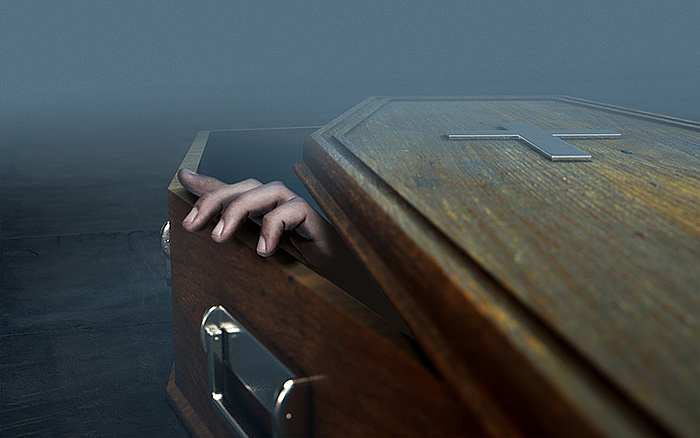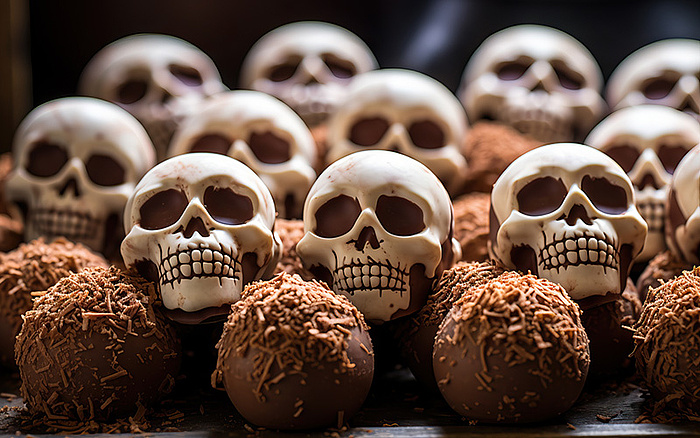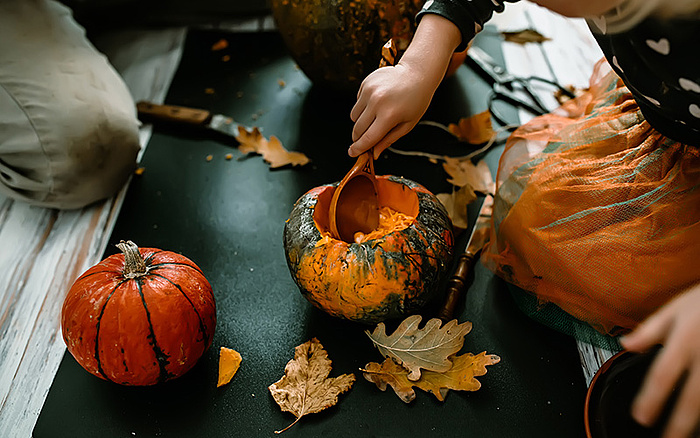
Spooktacular Halloween inventions
The realm of Intellectual Property (IP) may be intangible, but it is not a haunting place to be. The only spirit here rests in the law, and trolls can be tackled in brightly lit courtrooms. Still, this sanctuary of reason and procedure sees its fair share of morbid patents and gruesome contrivances.
This time of year, the moon can have a strange effect on even the stalwart IP sector. So, join us as we lift the coffin lid on five eerie inventions – if you dare!
Inter on the side of caution
What is more fitting for Halloween than when the dead rise from their graves as the living head prematurely to theirs? When the living very prematurely head to their graves.
Taphophobia is the fear of being buried alive and is not so far-fetched as to be the purview solely of horror films and Edgar Allan Poe stories. Though historical accounts and apocryphal tales abound, the ghastly occurrence resurfaces to this day with all the persistence of an undead curse.
Over the years, a plethora of inventions have sought to answer the plight of those truly gone too soon. Everything from small bells rung by strings to flags and pyrotechnics aimed to make signs of subterranean life obvious, and yet none of these solutions addressed the problem of a rapidly dwindling air supply. This was where many inventions from the late 19th century stepped forward, including Franz Vester's "Improved Burial-Case," patented in 1868. Not only did it incorporate the "usual" bell strung to the occupant's limbs, but it also featured a spring-loaded vent cover and even an escape ladder for more energetic revenants.

Using a safety coffin accepts the possibility that the person being committed to the ground could still be alive. Would not the added effort of installing air ducts and ladders be better spent making sure in the first place? But a stake through the heart and a mouthful of garlic might be going too far.
Some 17 years later, Charles Sieber and Frederick Borntraeger secured IP rights to a much more elaborate contraption, making use of a clockwork ventilation fan and battery-powered alarm, not dissimilar to a bedside clock. All practicalities aside, there is a poetic, if unintentional, irony to this way of signaling that one's time is not yet up.
Eat your heart out, cabbage-head!
Still and all, a safety coffin does little for a person of the undead persuasion, unlike our next patent. Thanks to a method and apparatus for molding fruits, a vegetarian zombie would be able to sate their hunger for brains with a meat-free option. Granted in 1989, Richard Tweddell's patent allows horticulturalists to grow fruits and vegetables in any number of shapes, but the design he suggests is of a human head.
"A zucchini in the likeness of Clark Gable, for example, complete with mustache, would be no ordinary sight on the dinner table." Indeed.
Considering that Clark Gable died almost three decades earlier in 1960, the image this dubious dining homage conjures is peculiar, to say the least. Nevertheless, the option is there, and such a mold could perhaps be repurposed to shape gelatin desserts and other sweet treats more becoming of the season.
To bring that touch of noir class to your Halloween party, why not present guests with a devilishly decadent Ava Gardner or a wobbly Bogie?
More than just a sweet tooth
Speaking of confectionary, if you find the appearance of candy corn to be distinctly non-threatening, perhaps the more sinister-looking fare promised by our next invention would better suit your taste. An anatomically correct candy novelty would realistically portray a human body part, such as a head, hand or finger, complete with edible bones. Meanwhile, the surrounding skin and flesh would be represented by chocolate, marshmallow, taffy or some other tasty tidbit.

Body horror and a full stomach rarely go well together, so making a clear distinction between the coroner's and confectioner's tables is usually a good idea. For squeamish trick-or-treaters and anyone not growing a celebrity eggplant in their back garden, less somatic candies are the way to go.
However, as well as childhood's insatiable fascination with the macabre, Jason Barba's grisly delights demonstrate how not all patent applications result in the grant of exclusive IP rights. That the severed treats never received IP protection was not because the subject matter was found to be unpatentable. Instead, the application was discontinued for failure to respond to an office action, which emphasizes several key points to remember about the process.
Firstly, gaining a patent takes time, patience and sometimes perseverance. A minimum of one year is to be expected, but averages are often much longer. When you file for a patent, you are signing up for a protracted journey that entails certain obligations.
If the patent office reaches out for clarifications, corrections or greater substantive detail, you will need to reply within a given timeframe (generally two to six months) or risk forfeiting your application. Finally, you must be aware that for some offices, such as the European Patent Office, the maintenance fee schedule is calculated from the time of filing, not the time of grant (as in the United States). This means it may be necessary to pay a renewal fee before a decision has been made on your application.
If all this seems alarming, the support of an experienced patent attorney can set your mind at ease and make sure there is no cause to chew your fingernails down to the bone.
Flushed with success
What is terrifying, on the intact hand, is a grisly mask and good timing. But as with most thrills and chills, the shock of an opportune "boo!" lasts only as long as your victim's heart is healthy; a fact inventor Alan Geller understood well. The deficiencies of static, one-and-done Halloween costumes inspired him to up his frightful game by increasing their "play and entertainment value."

The art of the scare is even more difficult to pull off in the light of day or when your quarry can see you coming. If you can unnerve an unsuspecting audience and keep them that way after the big reveal, you will have much greater chances of securing a sweet reward.
His ingenious solution is a bleeding costume element that keeps the revulsion and glee gushing. Rather than simply squirting fake blood at hapless observers and quickly depleting its gory reserves, Geller's apparel keeps all fluids contained in its own rudimentary circulatory system for ongoing capers. This is achieved by overlaying a ghoulish mask or skeletal breastplate with a transparent layer without fully bonding the two. Deliberate gaps formed between the layers act as channels through which fake blood or other ooze can be pumped via concealed tubing.
In this manner, clothes are kept clean, and boredom is scared off – at least until the morning.
Holding a candle to jack-o'-lanterns
We have seen how a mold can be used to spice up Halloween celebrations, but a different kind of mold is the bane of pumpkin carvers the world over. And the solution might also be some spice.
Fungal spores are everywhere and just waiting to spoil the fruits (and vegetables) of your hard labor, so Emily Elizabeth Floyd devised several methods for inhibiting mold growth. Vinegar, black pepper and cayenne pepper are simple everyday ingredients Floyd suggests can be sprayed onto the inside and outside surfaces of freshly prepared jack-o'-lanterns. By taking this one extra step, pumpkin artisans can enjoy their grinning creations for several days longer before they turn into grim mush.
All this leads us to the question of whether or not the jack-o'-lantern is itself the subject of a patent. Surely, someone was the first to make one. In short, as an ancient custom, the origin of the jack-o'-lantern is misty. However, the pre-Christian Celts are known to have carved vegetables with human faces, possibly to symbolize war trophies or act as memento mori. Eventually, this chilling art merged with the Gaelic festival of Samhain, an event to mark the last of the harvests and the beginning of winter. Samhain was also regarded as a time when spirits could more easily enter reality from the Otherworld, so wards were made to deter malevolent beings.

Mold is a blight on every pumpkin carver's fun, so any family-friendly method to stave it off is very welcome. A combination of vinegar and ground pepper may work wonders. Or, you could even spray chili sauce onto your jack-o'-lantern to turn up the heat and bring out some intense bloody hues.
When Irish emigrants moved to the United States from the 1840s onward, they brought the practice of placing torches inside hollowed-out turnips with them. Taking advantage of the pumpkins native to North America, the custom quickly grew in popularity to become a seasonal staple.
So, as you prepare your lantern or tuck into mounds of candy this year, take a moment to reflect on the invisible web of IP wafting all around. But do not be afraid; there is no spider in the center, only Dennemeyer's faithful band of treasure guardians, rights-keepers and counterfeit hunters.
Filed in

On September 1, 2024, Romania will join the UPC and become the 18th participant in the Unitary Patent system.



